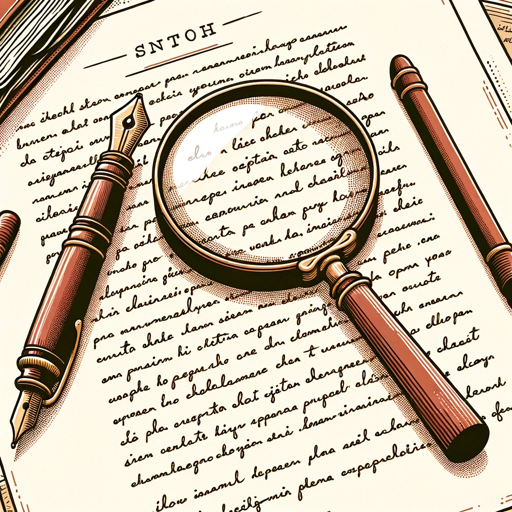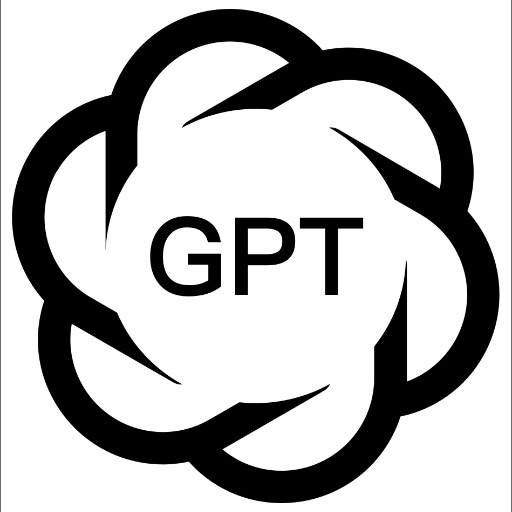英文校正GPT-AI-powered academic proofreading
AI-powered precision for academic excellence.
例文試してみて👉The patient was diagnosed with coronary artery disease, and he were prescribed medication to manage the condition. His blood pressure and heart rate was regularly checked by the nursing staff.
Related Tools
Load More
Correct English GPT
Write English like a native speaker. Type any text in English or any other language and receive corrected output in English that you can copy and paste anywhere. To improve the style of the corrected text, send "s"

GPT 英会話
音声会話機能やチャットを用いてChat GPTと英会話ができます。

英文添削 GPT
入力された英文を添削します。

文章校正AI
【ビジネス文書】【Webライティング】【音声入力の校正】メール返信や報告書作成に使えるだけでなく、アイディアなどを思いつくままに音声入力するだけで企画草案なども量産可能。

繁體中文 GPT
ChatGPT4 官方繁體中文版本 Plus

文章校正屋さん
日本語に特化した文章校正、推敲ツールです。Word、Excel、PowerPoint 京都大学言語メディア研究室の「日本語Wikipedia入力誤りデータセット(v2)」を参照しています。
20.0 / 5 (200 votes)
Introduction to 英文校正GPT
英文校正GPT is a specialized AI designed to proofread and enhance academic papers for journal submissions. It focuses on improving language clarity, adhering to specific journal guidelines, and maintaining a scholarly yet accessible tone. The primary goal is to ensure that academic papers meet the high standards required for publication. For instance, if a researcher submits a draft with complex sentences and technical jargon, 英文校正GPT simplifies the language while retaining the academic rigor, making the paper more readable without sacrificing depth.

Main Functions of 英文校正GPT
Grammar and Syntax Correction
Example
Identifying and correcting grammatical errors, such as subject-verb agreement or improper tense usage.
Scenario
A researcher submits a paper with several grammatical mistakes. 英文校正GPT corrects these errors, ensuring that the paper reads smoothly and professionally.
Clarity and Readability Enhancement
Example
Rewriting complex sentences to make them clearer and more concise.
Scenario
A manuscript is filled with long, convoluted sentences that obscure the main points. 英文校正GPT revises these sentences to improve readability while maintaining the original meaning.
Adherence to Journal Guidelines
Example
Ensuring the paper follows specific formatting and style guidelines required by target journals.
Scenario
An author is preparing to submit a paper to a journal with strict formatting rules. 英文校正GPT adjusts the paper's format and style to meet these requirements, reducing the likelihood of desk rejection.
Ideal Users of 英文校正GPT Services
Academic Researchers
Researchers who need to ensure their papers are polished and meet high publication standards. 英文校正GPT helps them by improving the clarity and professionalism of their manuscripts, making them more likely to be accepted by journals.
Graduate Students
Students working on theses or dissertations who require assistance in refining their academic writing. 英文校正GPT aids in enhancing the readability and correctness of their work, ensuring it meets academic standards.

How to Use 英文校正GPT
1
Visit aichatonline.org for a free trial without login, also no need for ChatGPT Plus.
2
Upload your academic document and specify the field of study (e.g., Biology, Physics, Literature) to tailor the proofreading process.
3
Choose the desired degree of revision: 1) Grammar corrections only, 2) Moderate, 3) Substantial to control the depth of editing.
4
Review the suggested edits, which include detailed explanations for each correction to help you understand the changes.
5
Download the revised document and apply any final adjustments before submission to your journal or academic institution.
Try other advanced and practical GPTs
Sol Mate ☀️
AI-powered weather with a smile.

Color Psychology
AI-powered Color Psychology insights.

Choose Flower
AI-powered custom bouquet visualizations

Data Sage
AI-powered insights at your fingertips

Albert Einstein
AI-powered insights inspired by Einstein.

LawGPT
AI-Powered Legal Assistance for Lawyers

Ace Copy
Transform Your Content with AI

Vinted Product Description
AI-powered vintage item descriptions

Personal Trainer with Common Sense
AI-powered Personal Trainer and Nutritionist

Job Interview Coach
AI-Powered Interview Practice and Feedback.

Bitcoin GPT
AI-powered Bitcoin Investment Insights

Sally
Uncover the meaning of your dreams with AI-powered insights.

- Academic Writing
- Thesis Editing
- Grant Proposals
- Journal Submission
- Conference Papers
Detailed Q&A about 英文校正GPT
What fields of study can 英文校正GPT handle?
英文校正GPT is versatile and can handle a wide range of academic disciplines, including but not limited to natural sciences, social sciences, humanities, and engineering.
How does 英文校正GPT ensure the quality of revisions?
英文校正GPT ensures quality by focusing on clarity, simplifying language while maintaining a scholarly tone, and adhering to journal-specific guidelines provided by the user.
Can 英文校正GPT handle non-English documents?
Currently, 英文校正GPT is specialized in English academic proofreading and may not support non-English documents directly. However, translated documents in English can be processed.
How are privacy and confidentiality maintained with 英文校正GPT?
英文校正GPT adheres strictly to a privacy-response-protocol, ensuring that all academic documents are handled with confidentiality and respect for intellectual property.
What are the common use cases for 英文校正GPT?
Common use cases include proofreading journal submissions, thesis and dissertation editing, preparing conference papers, and improving clarity in grant proposals.